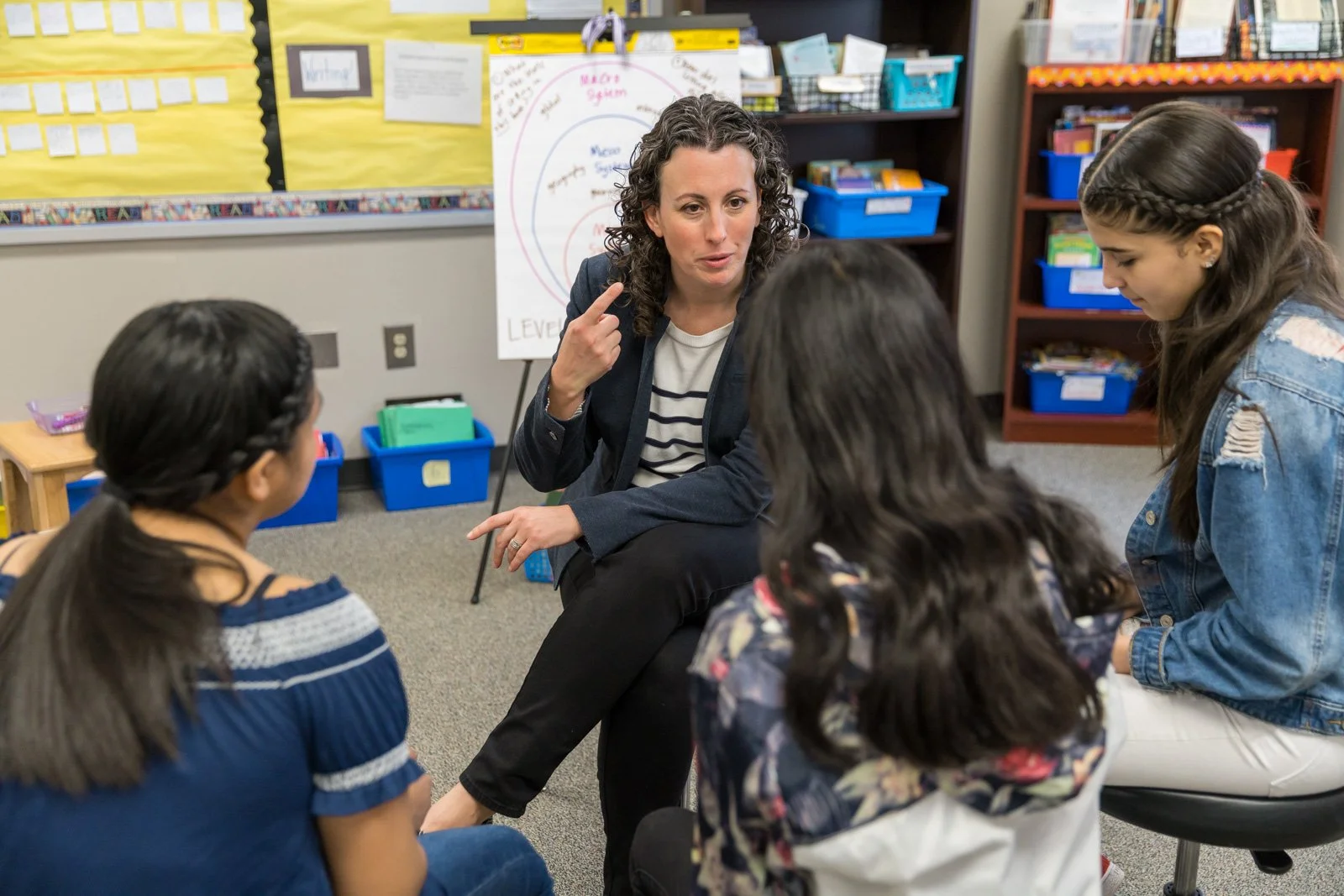Engagement: Thoughtful Planning, Skilled Teaching
September 9, 2024
Recent research about explicit instruction has shown what teachers have always known: student engagement is a critical component of learning from any lesson. And yet engaging a room-full students with diverse learning needs is challenging even on the very best of days. So, how can we as teachers best keep students actively involved and learning throughout an entire lesson? Through thoughtful planning and skillful, artful teaching.
How can I design lessons that will engage students?
Supporting students’ reading engagement begins as we create reading lessons. When developing any lesson, I consider the following three key components to ensure my lesson will keep students actively learning.
Lesson Type: If I’m teaching a particularly complex text, one I know my students will struggle with, I often turn to a lesson type that offers lots of opportunities for scaffolding, such as read-aloud, close-reading, or shared-reading lessons. Or perhaps I’m going to introduce students to new material later in the week. In this case, I might teach a vocabulary lesson to introduce key words or a focus lesson to concentrate on a particular strategy I know students will need to understand new concepts and information.
Texts: When selecting a text for a lesson, engagement is one of the lenses I use to assess if a particular text is the best to meet lesson goals. If I’m teaching a new skill, I might use a text students know well to reduce cognitive load. Or I might use a picture book (which are great for all K-8 students) to supplement the science textbook when teaching a unit on marine animals. Additionally, I want to make sure the texts I select, whenever possible, are reflective of students’ lives, cultures, interests, etc.
Strategies: Based on the literacy goal of the lesson, I plan to teach one or two strategies that help students successfully reach the learning goal. Strategies are step-by-step how tos that teach students to be active readers. And of course, whatever reading strategies I’m teaching, I think about how I’m going to engage the students. More about this in the next section.
Teacher Moves: As I create the lesson plan, I think about what parts of the lesson might be challenging or might require extra attention for students, and I work in moves – such as stop and jots, turn and talks, demonstrations, examples, etc. – so students have the opportunity and time to process what they are learning as well as demonstrate their level of understanding.
What can I do during a lesson to keep students engaged?
We all know that even when our prep work is excellent, that lessons don’t always go according to plan. In fact, I’ve never taught a lesson where students didn’t surprise me. So, we need to be ready to pivot and adjust our plans on the fly, the very art of teaching.
Plan for Regular Active Involvement: While there will be moments in a lesson where students need to watch me, I try to make these short and targeted and get them working as quickly, and regularly, as possible.. For example, if I demonstrate decoding one word with a spelling feature we’re studying, I might ask for their help to decode the next one chorally and then have them do the one after that on their own. Writing on whiteboards, holding a thumbs up or down, turning and talking, stopping and jotting—I use a variety of ways to get them engaged, but I always aim to get students working as much possible in any.
Listen and Observe, and Adjust: I think this is the most important thing I do during any lesson. If students are restless, I may pick up my pace. If they look disinterested, I may introduce a turn-and-talk or a stop-and-jot to get them actively involved. If they seem puzzled, I may add in another demonstration or provide an example. Students’ reactions are our best guide not only to their level of understanding but also their level of engagement.
Change Course: Sometimes a lesson just isn’t resonating with students no matter what we do. I’ve certainly taught lessons that I could tell just weren’t connecting. Maybe the kids are on learning overload, maybe they’re not ready for the material, or perhaps the topic doesn’t seem relevant. Whatever the reason, I’m not afraid to stop the lesson if students are simply checked out. I can come back to the objectives later in another lesson. When I do, I’ll consider out what went wrong, adjust, and reintroduce the lesson with a new text, different examples, an alternate lesson structure, or increased student ownership.
To learn more about ways to support engaging, explicit instruction, check out Teaching Reading Across the Day.

